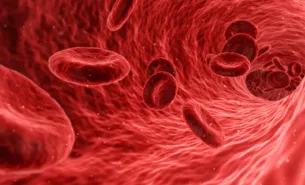The melting of polar ice due to climate change will open global shipping routes through the Arctic in summer by mid-century, according to experts. More ships in the remote area means greater pollution impacts on the marine ecosystem. What will these impacts look like? In a first commissioning experiment at MAX IV’s SoftiMAX beamline, Swedish researchers analysed the cloud-forming abilities of particle exhaust from ships using low-sulphate fuels as well as high-sulphate fuels conditioned with wet scrubbers. Their findings indicate the fuel types produce different, but unintended effects on particle emissions and therefore, our atmosphere.
As the planet warms, a unifying challenge will be determining ways to reduce human impact from use of natural resources. New technologies and ‘greener’ resourcing are being utilised and their potential effects are not always clear. In the busy maritime sector, these unknowns stand to have a big impact on ocean health.

“The initial ideas for this research stemmed from a desire to better understand the environmental impacts of sulphur emissions from maritime shipping. This curiosity was further stimulated by the implementation of marine regulations aimed at reducing these emissions and the different compliance pathways that ship operators might choose to meet regulations,” said Xiangrui Kong and Erik Thomson, physical chemistry and climate researchers at the University of Gothenburg in Sweden.

Current international maritime regulations aim to reduce the levels of hydrophobic particle emissions, which typically come from ship diesel engines running on high-sulphate fuels. Hydrophobic particle exhaust forms from incomplete combustion in, for example, black carbon, soot or sulphates. Shippers meet the compliancy standard today with use of sulphur removing devices, namely scrubbers, or fuel with low sulphur content (FSC).
Studies show that hydrophobic particles influence global warming by reducing the cloud surface albedo (reflectivity or brightness), accelerate melting, induce air pollution and health issues, cause ecosystem damage, and reduce visibility.
“Given the delicate Arctic ecosystem and the importance of preventing ice melt in the region, using low FSC fuels without scrubbers might be the preferable method. The reduction in albedo due to soot particles is a significant concern, but the potential negative effects of scrubber washwater and changes in particulate matter with high FSC fuels and scrubbers could be even more harmful to the Arctic environment. Further research is needed to fully understand the impacts of each method and develop effective strategies to mitigate their negative effects,” explained Kong.
Measuring for impact
Following earlier work on the physical properties of ship particle exhaust with different fuels, researchers from the University of Gothenburg aimed to explore the chemical properties of the particles. They ran a marine test-bed engine at Chalmers University of Technology Marine Engine Laboratory using both the low FSC fuels and the high FSC fuels with scrubber to test the fuel effects on exhaust particles and subsequent cloud formation. The research is funded by Formas, the Swedish Research Council for Sustainable Development.

Cloud condensation nuclei (CNN) activity was measured with scanning transmission X-ray microscopy (STXM) at MAX IV’s SoftiMAX beamline, followed by chemical analysis, with the goal to understand the physical and chemical basis for observed changes. SoftiMAX operates with soft X-rays, ideal for analysing surface and near-surface layers.
The research group found that high FSC fuel with scrubber technology consequentially produced more cloud condensation nuclei or cloud seeds, and emissions with hygroscopic particles. Hygroscopic articles absorb water from the air—which leads to cloud formation—can increase cloud albedo and extend cloud lifetime or increase precipitation, which shortens cloud lifetime. Based on the study data, the low FSC fuels produced highly hydrophobic particles but less cloud seeds and less sulphur emissions.
One might think that cloud formation has a cooling effect by default and is therefore positive for climate change. The answer, however, is not so straightforward, explained Thomson. “The bottom line is that the impact of hygroscopic particles on climate is complex and can vary depending on a range of factors, including the size and concentration of the particles, the type of cloud, and the local atmospheric conditions. There are also other factors to consider, such as the fact that clouds can trap heat, which can have a warming effect.”
In simple terms, changes to cloud cover or other significant factors can have cascading effects on the planet’s climate systems. In next steps, the researchers plan to investigate larger-scale cloud and climate effects from ship emissions using cloud-resolved modelling.




